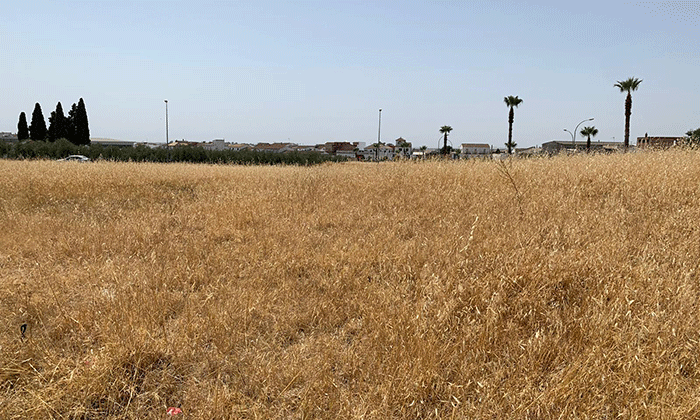Dry conditions persist in South America and this is thought to cut production the same as a year ago. Several countries announced travel restrictions over the weekend to try to contain the Omicron variant of Covid-19 and this sparked ideas of increased global economic stress.
The Omicron variant of Covid-19 is causing problems in the market again as more countries impose travel restrictions in an effort to contain its spread. This is renewing concerns about the state of the world economy and what it may mean for the ongoing recovery.
Questions are beginning to arise about China’s recent corn purchases. China was an active buyer of US corn this year and has since bought a significant volume of corn from Ukraine. China is making these purchases even though its domestic corn production was record high this year. This has several analysts questioning the quality of the harvest and whether the flooding during the growing season had more of an impact than previously thought. This may increase the possibility of higher US corn imports in the future, especially if purchases from China deplete other sources.
In China, regulators continue to address the issue of food safety and the need to accumulate stocks of fertilizers and other inputs. This week, in China, regulators raised the pork import tariff from 8% to 12% that should have medium-term impacts. Pork prices in China have accumulated a drop of more than 10% from the price peak at the end of November. The process of composition of this year’s stocks takes place a month before, anticipating the lunar holiday of 2022.
China’s reaffirmation of a long-term goal of being almost completely self-sufficient in pork production means that it will continue to buy global supplies of grains to feed the world’s largest herd of pigs.
It is good to remember problems with the standard of corn in the domestic market of China, this country bought 29.5 Mt of corn and 26.0 Mt of other cereals during 2020/21.
When it comes to world production, more interest is being put in wheat. World wheat production was great this year, but so was demand and the combination of both with reduced world reserves. A rebound in production this year and a build-up of reserves have been forecast, but the market is now beginning to question these prospects. This is due to ongoing climate problems in some regions of the world, including drought in North America and extremely cold temperatures in the Black Sea. The question at the complex is whether record production in Argentina and Australia will offset these potential losses.
The biggest interest in world wheat figures at the moment is in Russia. Russia’s wheat production losses have caused the country to continually increase its export taxes to deter demand, but this has met with little success. Now Russia is going to limit its wheat exports to only 8 Mt from February until the end of the marketing season. While this may limit future demand, buyers will still have other sources of coverage, including another record crop from Australia.
This week we also had rumors that Ukraine could limit its wheat exports and this situation brought strength to the market in Chicago.
According to data from the Ministry of Agriculture Ukraine, 29.2 Mt of cereals have been exported so far in the 2021/22 season, 22.2% above 2020. This included 15.3 Mt of wheat, 5.1 Mt of barley and 8.4 Mt of corn.
The global supply of high-quality wheat is also forecast to decline in the first half of 2022, as the onset of the La Niña weather phenomenon during Australia’s peak harvest period dashed hopes that Australia’s fifth-largest wheat exporter The world will find most of the mid-Asian countries in demand for high-protein wheat.
Record high freight costs and disruption due to a new variant of COVID-19 amid shortages of high-quality wheat and tight exports from some other major regions mean world wheat prices are likely to remain elevated. until the first half of 2022.
Australia is expected to produce a record harvest of 35/37 Mt in marketing year 2021/2022, but widespread rains due to La Niña in November have resulted in significant quality degradation across its entire wheat belt, and expects the proportion of its degree of grinding will drop to about 35% -45% in 2021/22.
Argentina’s 2021/22 wheat production is projected at a record 21 / 22.5 Mt
Estimates of the summer soybean and corn harvest fell by approximately 12% and 13% in the state of Paraná in Brazil, respectively, according to the monthly survey for December 2021 published on Wednesday (22) by the Department of Rural Economy ( Deral).
The Deral head reveals that the previous projection of harvesting 21 million tons of soybeans was reduced to 18.6 million tons in Paraná. And it is the drought that reduced estimated crop production, especially in the western and southwestern regions of the state. On the other hand, soybean and corn prices are higher than in the same period last year.
The world’s largest soybean supplier, Brazil, continues to break production records every year and the same is expected in 2021/22, when production is projected at an all-time high of 144 Mt, almost 24 Mt above US production. .UU., According to the latest USDA report, released Dec. 9.
Brazil is also projected to export a record 94 Mt of soybeans in 2021/22, compared with 56 Mt from the US according to USDA data.
Both Brazil and the US compete for soybean import demand from China, the world’s largest buyer of soybeans. The relationship between the US and China is also expected to have an important voice in the performance of US soy exports in 2022.
China’s soybean purchases are much more concentrated in Brazil in recent times.
Different analysts are projecting the 2021/22 soy production of Paraguay at 8.0 / 8.5 Mt against the previously estimated 10.0 / 10.5 Mt. They also highlight the lack of rain for the next two weeks with very high temperatures and with losses in yields that continue to worsen. The situation is very complex.
Last week, the Argentine government announced that it would limit the volume of corn and wheat exports this business year to try to contain the country’s food inflation. Now in Argentina a possible increase in corn export taxes is also being discussed. These situations could end up being a benefit to the United States and other of our competitors, even if taxes are not raised. The mere threat of an increase may be enough to deter buying interest and drive importers to the United States in search of hedging.
Demand for US soybeans has become erratic in recent weeks. Import buyers have started to emerge on breakouts, but then retreat when futures rise. Buying as a whole has calmed down, which is not uncommon at this time of year. Currently, all the import interest is in South America, especially with soybeans being offered at a considerable discount to the US The question now is how comfortable buyers are with the South American production and if they will start buying. in the US for a deferred delivery in the event of production losses due to the La Niña event.
When it comes to soy production from South America, almost all the interest is in Brazil. We have started to see some adjustments in crop estimates, but so far, these have been minimal. The current estimated range for Brazil’s soybean crop is 142 Mt to 148 Mt. This range is 2 Mt less than the previous range, but is in line with what the USDA is using in the balance sheets. Even at the lowest level, this is still a larger soybean crop than what Brazil produced last year.
One of the main issues in the market recently has been the high cost of inputs for the next production season, mainly corn. While input costs are considerably higher than a year ago, this may not be as big a factor in new crop acreage as other developments. The main one is the availability of inputs at any price. Many US farmers applied as much fertilizer as possible this fall (spring) as they are concerned about a possible shortage next spring (fall). If this shortage does in fact develop, it is when uncommitted acres can shift to other crops.
Several traders exited the market after the December supply and demand report and will not return to the market until early January, with some taking full time between now and the January USDA report. The January report contains not only the usual supply and demand figures, but also the final production figures for the current U.S. business year. Quarterly stock figures as of December 1 will also be released with the figures for JANUARY WASDE.
Although weather is always a factor for markets, it will have a bigger impact as we move into January and February. That is when we will have a better idea of whether La Niña will build up and become a problem like last year. It is not uncommon to see the market focus on these issues during the month of January and especially in Argentina.
Author: Esteban Moscariello – Commercial Executive at Díaz Riganti Cereales
–


